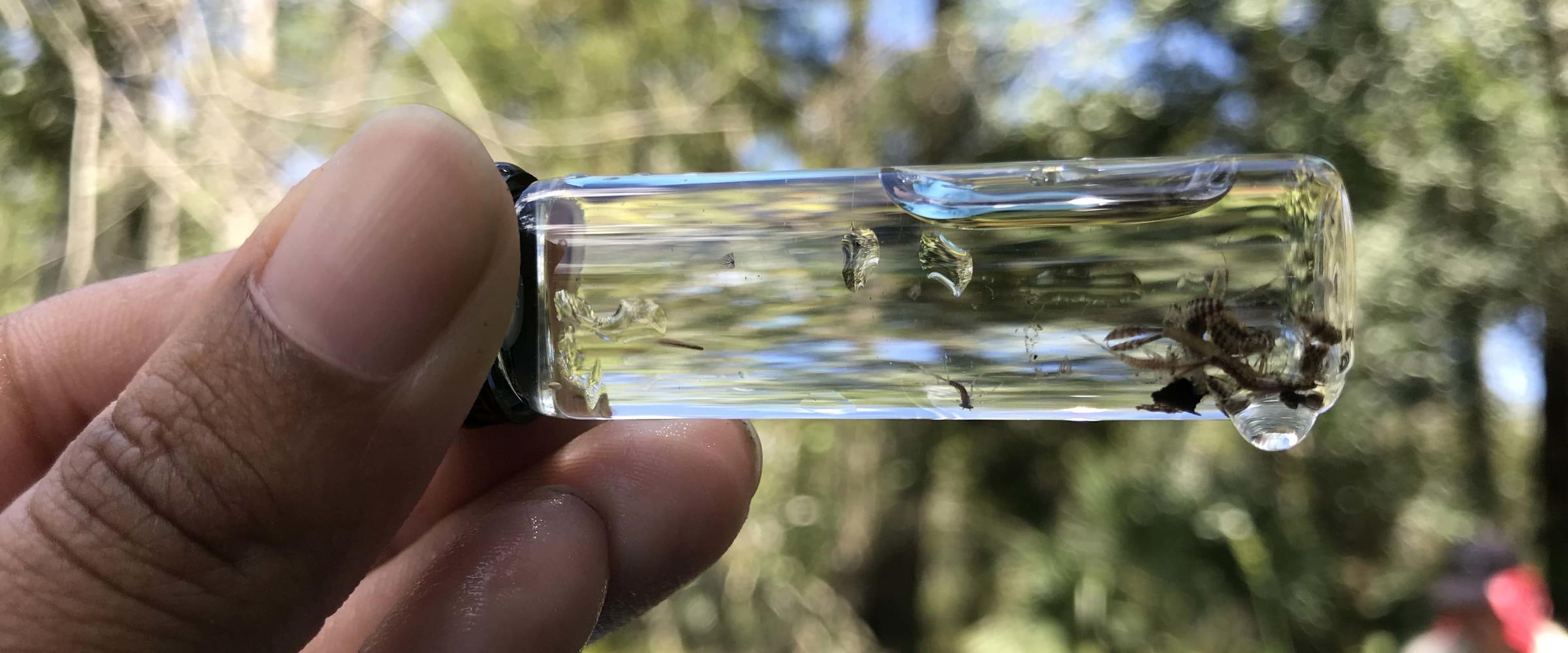This summer, the Western Everglades research team at Audubon’s Corkscrew Swamp Sanctuary found themselves rising early, packing field gear and a lunch, and heading out for a new project in the Picayune Strand. But this summer came with new energy for the team. After recovering from Hurricane Irma’s flooding and nearby coasts still suffering with blue-green algae combined with red tide, researchers were eager to start collecting data and better understand freshwater wetland restoration efforts. Their passion took them to the Picayune Strand Restoration Project, the first Comprehensive Everglades Restoration Project (CERP) to begin construction.
Audubon is partnering with Johnson Engineering and Florida Gulf Coast University on this unique research effort, which uses aquatic fauna like fish and frogs to shed light on restoration progress. Wetlands are hotspots for fish, aquatic macroinvertebrates, and amphibians, and their responses to hydrologic change provides vital data for Audubon researchers on wetland restoration efforts. These small creatures can indicate if restoration is working, provide valuable management insights, and empower project managers to make better ecological decisions as restoration progresses.
Research like this has never been more important because it tells researchers how well restoration is working. And restoring freshwater wetlands doesn’t just help the fish and frogs. They help people, too. According to Audubon scientists, severe flooding, wildfires, blue-green algae, and red tide are made much worse when there are fewer wetlands around. High-functioning, restored wetlands perform important functions like:
•Buffering extreme flood events by storing and holding water,
•Cleaning and filtering water with its mosaic of plant communities, reducing nutrients that exacerbate blue-green algae and red tide, and
•Protecting communities from large out-of-control wildfires by supporting natural fire regimes and helping prevent catastrophic wildfires.
Experts from Audubon’s Corkscrew Swamp Sanctuary will continue to lead these important efforts and provide guidance to restoration project managers based on their research.
Learn more about visiting Audubon's Corkscrew Swamp Sanctuary in person at Corkscrew.Audubon.org




